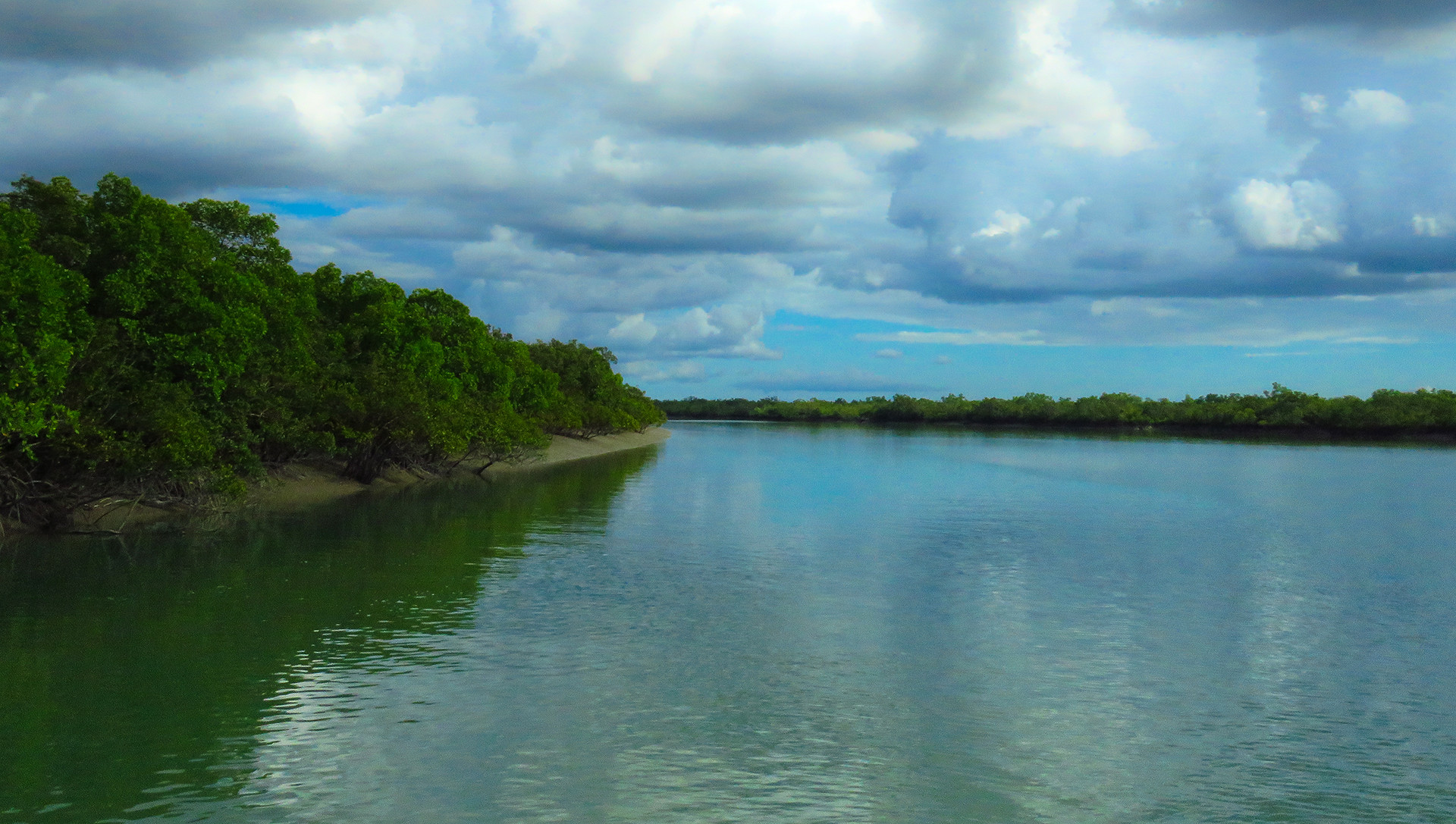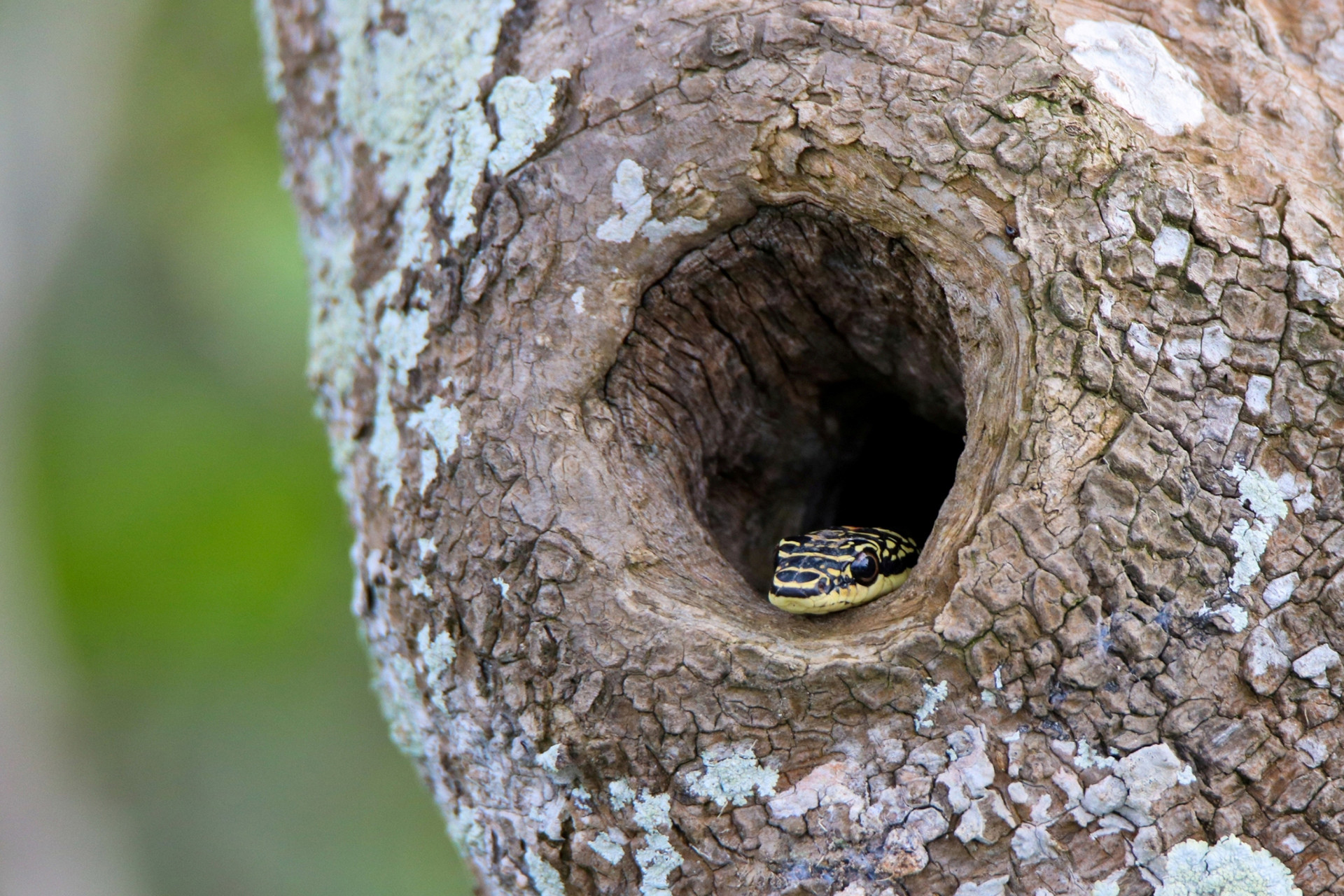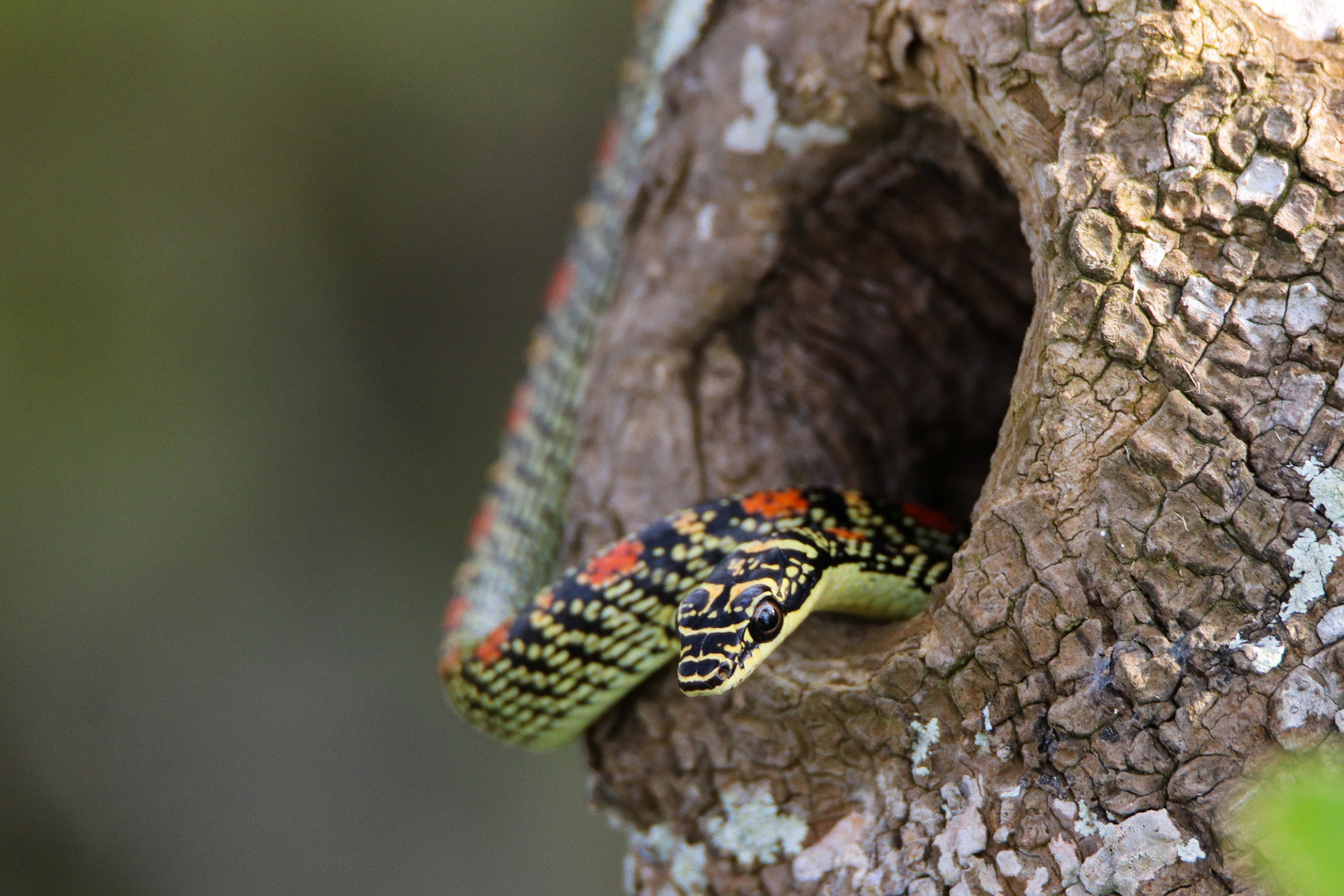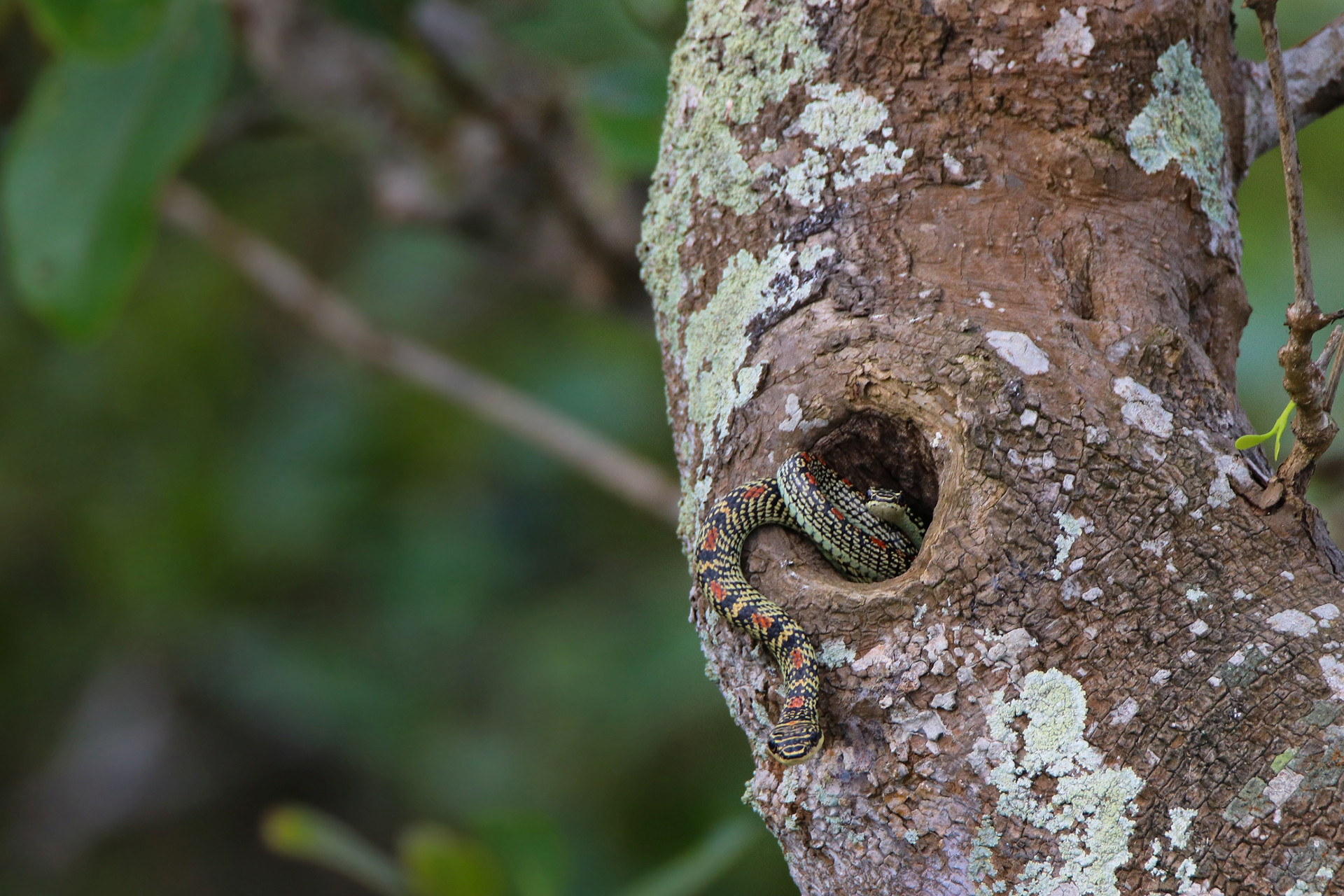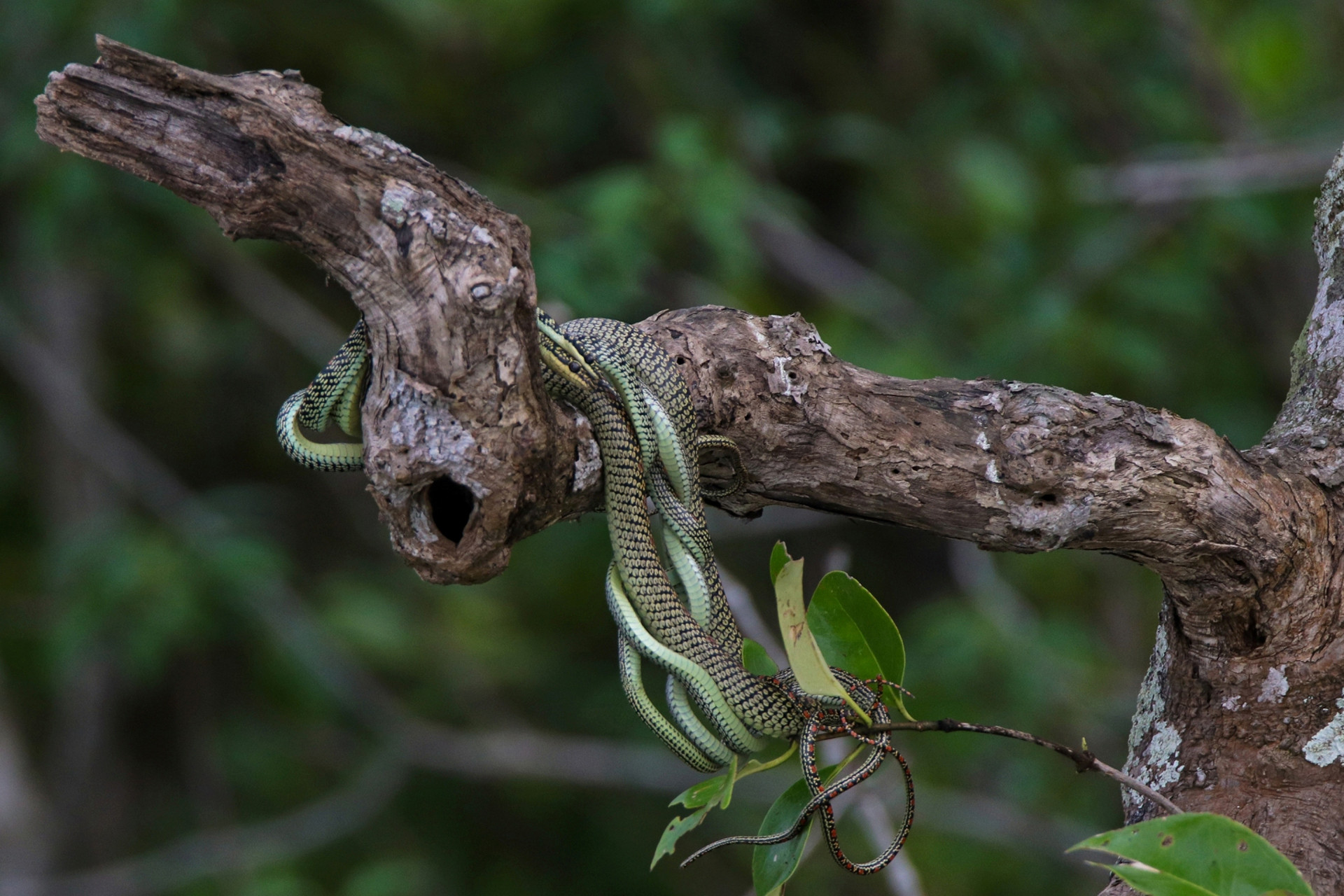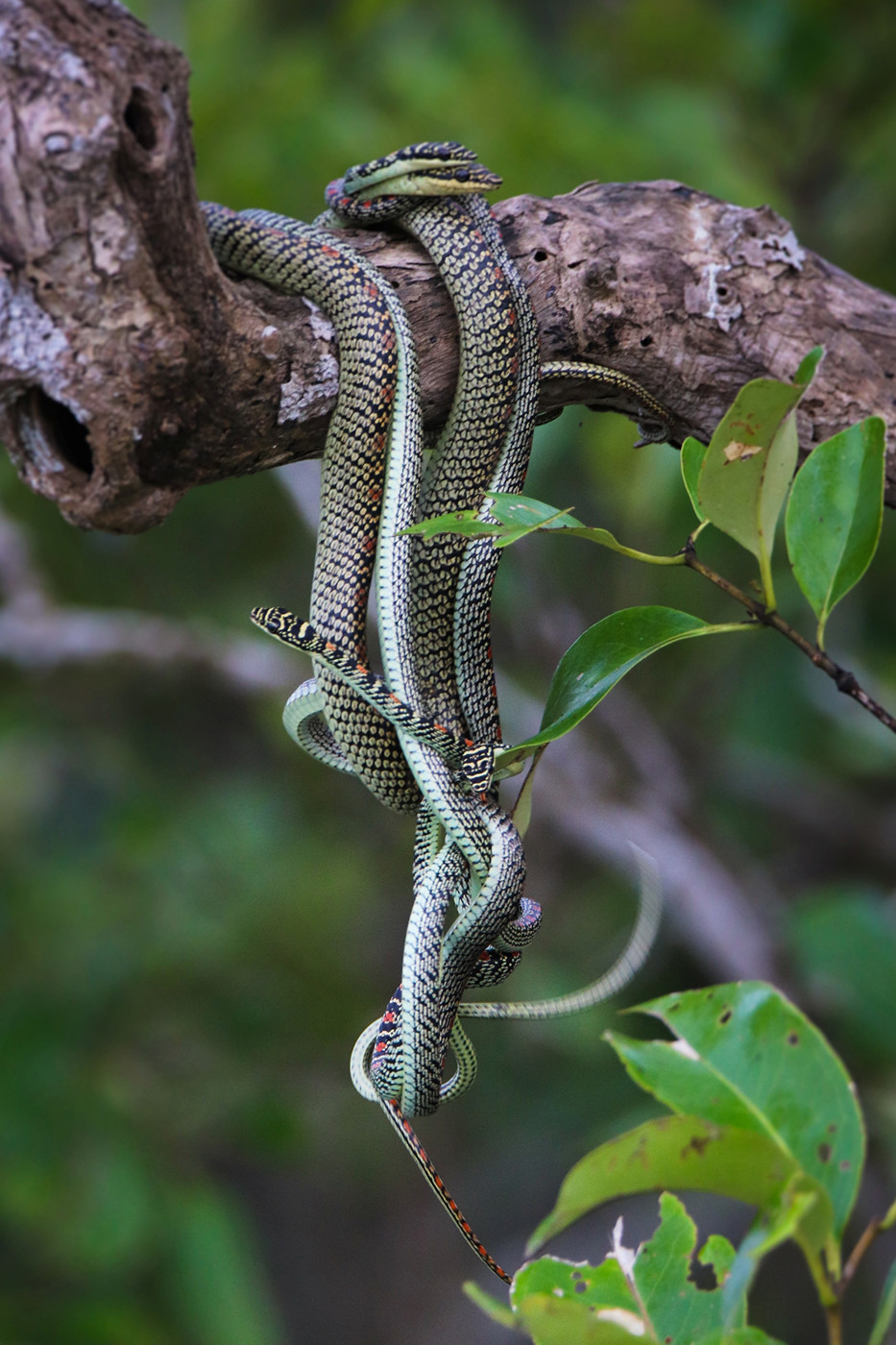Sunderbans is a place that evokes a thousand emotions, for nobody knows what lies behind the veil of its mangrove forests. The mangroves get inundated twice a day, and with every tide, the stories change. Ruled by the mysterious swamp tigers, the sheer variety of species that thrive in this riverine ecosystem – be it mammals, birds or reptiles is immense.
For those who haven’t visited the park, safaris here are on motorised vessels, unlike the gypsy jeeps that thrive in the other Indian jungles. Spotting, rather than tracking, is the key. Only the finest of naturalists succeed, by virtue of their excellent discerning skills. Situated not too far away from my home in Kolkata, I have had the opportunity to visit it multiple times over the years and search for some of these lesser-known species. One monsoon, I got lucky and was able to photograph the rare and highly venomous Red-tailed Bamboo Pit Viper.
The monsoons, aka the breeding season, are a perfect time to observe some of the most beautiful and less popular denizens of the forest – the Ornate Flying Snake is one of them. Apart from the vivid riot of colours, what makes these beautiful snakes interesting is their ability to glide short distances. They can move from one tree to another, with more grace than that of a trapeze artist. At the same time, they are excellent climbers and can swiftly move up trees, navigating across branches, using their keeled belly scales.
On a four-day trip with my friends to the Sunderbans, I hoped to photograph some elusive snakes. As we ventured into the forest and cruised past the Sudhanyakhali camp, our naturalist asked the boatman to go close to the banks and pointed towards a particular tree. Hoping to spot some bird, we clung to our cameras but could not see anything. The persistent winds meant the boat was rocking heavily and our naturalist was incensed that we were not able to spot what he was pointing out to us. “See what?”, was our collective response! And then someone from the group finally spotted it – the head of an Ornate Flying Snake, no bigger than the size of an almond but distinctly colourful and bright, barely sticking out of a groove in the tree. We incessantly took photos of the snake’s head and then asked our boatman to move back and allow some space to the creature, hoping that it would come out once it became comfortable with our presence – but no. Even after waiting for close to an hour, it resisted coming out of its home.
Since this particular tree was near the forest entry area, we decided to take another chance while returning. It had rained a bit during the day and the sun was out. And there it was, glistening in the afternoon light. But on noticing our boat, it quickly climbed up the tree and vanished among the branches. The cameras were too slow for its acrobatics! We were a bit disappointed, but our naturalist told us that we will see the snake again during the course of our tour.
On the evening of the second day, we paid another visit to the tree. This time, to our amazement, we saw two of them, intertwined together, busy in courtship. We took numerous shots of the snakes while maintaining a substantial distance so as not to frighten them. It was a very unique sighting and our naturalist mentioned that there is no photographic evidence of such breeding activities of the species, from the Sunderbans. Naturally, this heightened our excitement further.
The real prize though was on the evening of the following day. By now we had made it a habit to stick to our binoculars while cruising past the tree, when entering and exiting the forest, with the hope of some impending activity. We did not see the snakes in the morning but while exiting, we saw something very thick, hanging from the same branch. Since we were still quite far away, we patiently waited for a better view.
Once we came closer, the mystery unfolded, and it was clear that there were four snakes clinging together to form a 'mating ball'. They were so busy mating that they perhaps could not sense our boat. We were astonished, to say the least, and for a moment forgot to take any photographs whatsoever. They would slide along each other’s bodies and hold on as if they were one. Their activities were akin to two colourful liquids spilling on top of one another. We shot some images and videos and then set aside our cameras to behold this enigmatic mating ritual with our naked eyes.
We all felt blessed to have witnessed such a unique natural history moment, especially, at a time when this particular species is fighting the perils of habitat destruction and the exotic pet trade market in South Asian countries.
Thank you, Sneha Dharwadkar, for your sound advice on all things reptiles!
